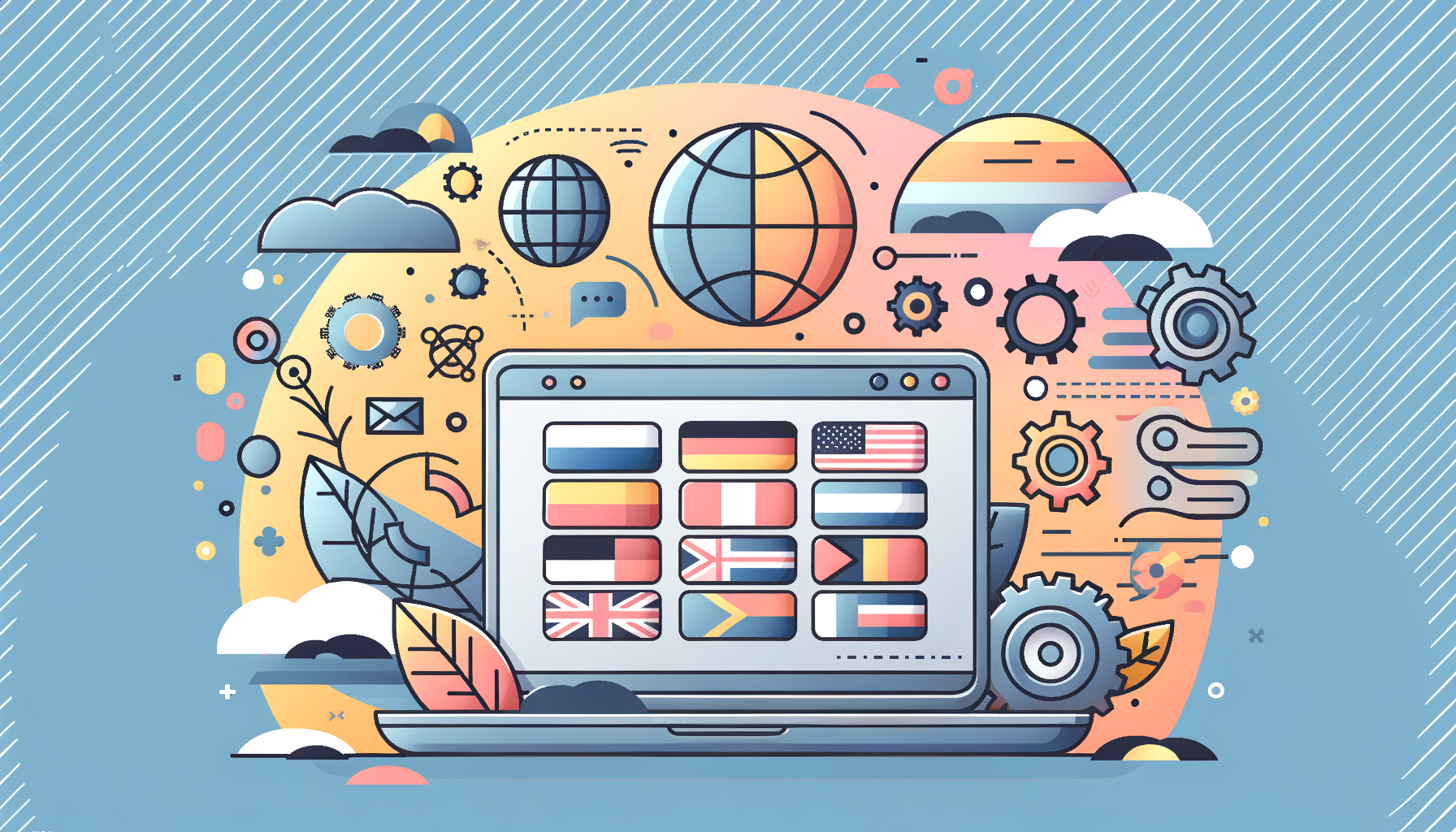
Navigating the Complexities of Multilingual WordPress Sites
Managing a WordPress site that caters to a multilingual audience can be a daunting task, but with the right strategies and tools, it can be made significantly more manageable. Here’s a comprehensive guide on how to maintain and optimize your multilingual WordPress site.
Choosing the Right Multilingual Plugin
When it comes to creating a multilingual WordPress site, the choice of plugin is crucial. There are several popular plugins available, each with its own set of features and advantages.
- WPML (WordPress Multi-Lingual): One of the most popular and robust multilingual plugins, WPML offers extensive support for multisite installations and is highly recommended for its ease of use and comprehensive features. You can learn more about WPML on their official website WPML.
- Polylang: A free plugin with over 700,000 active installs, Polylang is a great option for those on a budget. It allows you to easily manage translations for posts, pages, tags, and categories. For more details, you can visit the Polylang plugin page on WordPress.org.
- TranslatePress: This plugin stands out for its live editor feature, allowing you to translate your site in real-time. It also supports machine translations, which can be manually improved. Check out the TranslatePress website for more information.
Managing Multilingual Content Updates
One of the key challenges in maintaining a multilingual WordPress site is ensuring that content updates are consistent across all languages. Here are some strategies to help you navigate this complexity:
Translation Management Systems (TMS)
Using a Translation Management System (TMS) can significantly streamline the translation process. These systems provide a centralized dashboard for tracking updates and ensuring that no language version falls behind. For example, WPML’s Multilingual CMS Plan includes a translation management module that allows you to manage users who work as translators on your website.
Automating Language Synchronization
Automating language synchronization is essential for keeping your multilingual site up-to-date. Plugins like WPML and Polylang offer automatic synchronization features that detect changes in the default language and prompt for corresponding updates in other languages. This ensures that all versions of the site remain consistent without manual tracking of content changes.
Regular Audits and Updates
Establishing a robust workflow that includes regular audits and updates is crucial. Scheduled checks can be automated to alert site managers of any discrepancies or outdated translations. Tools such as Xbench or Verifika can assist in quality assurance, ensuring that translations are accurate and contextually appropriate.
Ensuring Consistent User Experience
Delivering a uniform user experience across different languages is paramount to retaining international visitors and ensuring brand integrity.
Seamless Integration of Language Options
Ensure that language options are seamlessly integrated into your site. This includes using custom menus to link to different language versions of your content. WordPress.com provides a detailed guide on how to set up custom menus for multilingual sites.
Cultural Nuances and Localized Content
Pay attention to cultural nuances and ensure that your content is localized. This involves rigorous quality checks for translations and ensuring that theme and plugin compatibility is maintained across languages. For more insights on cultural localization, you can refer to the resources available on the WordPress Advanced Administration Handbook.
Responsive Design and Cross-Browser Functionality
Ensure that your site’s responsive design and cross-browser functionality are flawless, as these elements must perform well for users worldwide. A well-designed site will help in retaining visitors and enhancing their overall experience. For tips on responsive design, you can check out the resources on Smashing Magazine.
Optimizing Multilingual SEO
Optimizing your multilingual site for SEO is critical for global reach.
Strategies for Global Reach
Use SEO-friendly URLs and meta tags for each language version of your content. Ensure that your site is indexed correctly by search engines for different languages. Google’s guidelines on international SEO can provide valuable insights on how to optimize your site for global audiences.
Using the Right Hosting
Choosing the right hosting service can also impact your site’s SEO. Consider using a hosting service like Kinsta, which offers high-performance hosting solutions that can help improve your site’s loading speed and overall performance.
Managing Multilingual Plugins and Extensions
Managing multilingual plugins and extensions requires careful consideration to avoid compatibility issues.
Best Practices
Ensure that all plugins and themes are compatible with your multilingual setup. Regularly update your plugins and themes to the latest versions to avoid any compatibility issues. For best practices on managing multilingual plugins, you can refer to the guide on Acclaim Agency’s blog.
Database Backup
Before making any significant changes to your site, ensure that you have a complete database backup. Many multilingual plugins change the database significantly, so having a backup is crucial in case something goes wrong.
Regular Maintenance Protocols
To sustain a robust and efficient multilingual WordPress site, it is crucial to adhere to a structured maintenance routine.
Scheduled Checks
Automate scheduled checks to alert site managers of any discrepancies or outdated translations. This includes regular updates to plugins, themes, and core WordPress files. For more on regular maintenance protocols, you can check out the guide on maintaining healthy multilingual WordPress sites.
Performance Optimization
Regularly optimize your site’s performance to ensure it loads quickly and efficiently. Tools like GTmetrix or Pingdom can help you identify areas for improvement. For tips on performance optimization, you can visit the WordPress Codex.
Conclusion and Next Steps
Maintaining a multilingual WordPress site requires a strategic approach to content updates, user experience, SEO, and plugin management. By choosing the right multilingual plugin, automating language synchronization, ensuring consistent user experience, optimizing for SEO, and following best practices for plugin management and regular maintenance, you can ensure your site operates seamlessly across different languages.
If you are facing challenges in maintaining your multilingual WordPress site or need expert assistance, consider reaching out to Belov Digital Agency for professional help.
Additional Resources
- For more detailed guides on setting up multilingual WordPress sites, you can visit the WordPress Advanced Administration Handbook.
- To learn more about the best practices for maintaining multilingual sites, check out the blog post on Acclaim Agency’s blog.
- For step-by-step tutorials on creating multilingual WordPress sites, you can refer to the guide on WPBeginner.
By leveraging these resources and following the strategies outlined above, you can ensure your multilingual WordPress site provides a seamless and engaging experience for your global audience.













